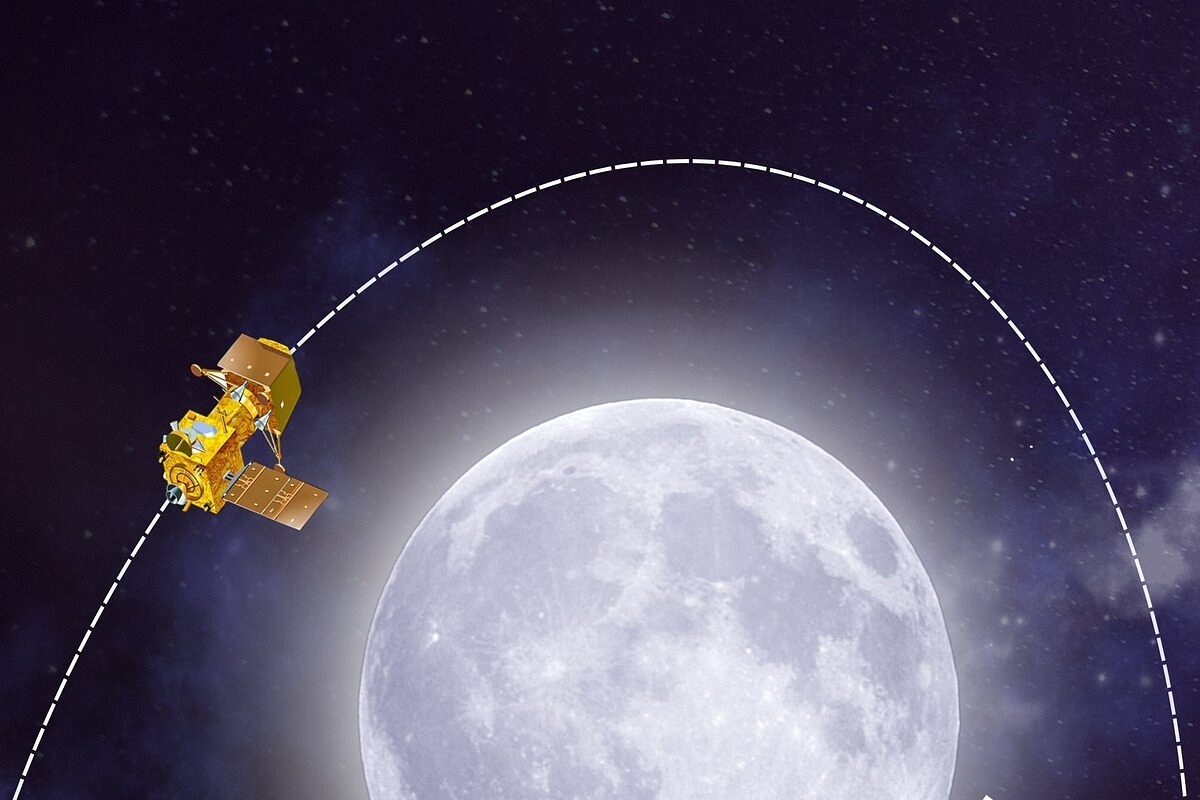Science
Explained: 'Twenty Minutes Of Terror' As Chandrayaan-3 Lander Vikram Begins Its Descent Towards Moon's Surface
- In a powered descent, the Vikram lander will descend towards the moon surface at a velocity of 1.68 km per second, equivalent to approximately 6,048 km per hour.

The Chandrayaan-3 propulsion module in orbit around the Moon. (ISRO/Twitter)
This Wednesday (23 August), the nation will experience a nerve-wracking 'twenty minutes of terror' as the Vikram lander attempts a soft landing on the moon's surface in the evening.
India's Chandrayaan-3 is ready to make history by attempting a soft landing of the Vikram lander with the Pragyaan rover near the moon's south pole.
The final twenty minutes of this journey are being referred to as "twenty minutes of terror" and are expected to be as intense as the last moments of a T-20 cricket match.
Following a successful lift-off, ISRO's Bahubali rocket, also known as the launch vehicle Mark-3, placed Chandrayaan-3 into orbit. The spacecraft then completed several elliptical orbits around the Earth, gradually increasing its velocity.
Chandrayaan-3 embarked on its journey towards the moon on 1 August, covering a distance of 3.84 lakh km. By 5 August, the satellite successfully entered the moon's orbit and settled in, where it remained stable for several days.
In a crucial maneouver on 17 August, the propulsion module and the Vikram lander, along with the Pragyaan rover, separated while the satellite was in a 153-km by 163-km orbit. The propulsion module continued its orbit around the moon in the same dimensions.
In a powered descent, the Vikram lander will descend towards the moon surface at a velocity of 1.68 km per second, equivalent to approximately 6,048 km per hour. This speed is nearly ten times faster than that of an airplane.
During this descent, the Vikram lander will gradually decelerate by firing all its engines. However, it will still maintain a nearly horizontal position relative to the moon's surface. This phase is known as the rough braking phase and typically lasts for about 11 minutes.
Following some carefully executed maneuvers, the Vikram lander will be adjusted to a vertical position relative to the moon's surface. This marks the beginning of the 'fine braking phase', where more precise adjustments are made to control the descent.
At an altitude of 800 m above the moon's surface, both the horizontal and vertical velocities of the Vikram lander will come to a halt. It will hover above the lunar surface, carefully surveying the landing strip.
Descending further, the Vikram lander will stop to hover once again at a height of 150 m. During this time, it will capture images to detect potential hazards and will search for the optimal landing site.
With only two engines firing, the Vikram lander will gently touch down on the lunar surface. Its legs have been designed to withstand a maximum impact of 3 m/second or approximately 10.8 km per hour.
As soon as the sensors on the legs detect contact with the lunar surface, the engines will shut down, bringing an end to the nerve-wracking twenty minutes of uncertainty.
After the landing, the lunar dust, known as regolith, will be allowed to settle down as it moves away. Following this, the ramp will open up, and the Pragyaan rover will be carefully rolled down onto the lunar surface.
Once the Pragyaan rover successfully reaches the lunar surface, it will gain the freedom to move around and explore its surroundings.
A significant moment will occur when the Vikram lander captures images of the rover, and in return, the Pragyaan rover takes images of the lander. These images will mark India's first selfies from the lunar surface, which will then be transmitted back to India.
With the successful transmission of the selfies, the stage will be set for real scientific exploration. Both the Vikram lander and rover are powered by solar energy and designed to operate for one lunar day, equivalent to 14 Earth days. The true scientific investigations will commence after that moment.
If everything goes according to plan, India will become the fourth country to successfully land on a celestial body.
This would be a significant achievement for the Indian Space Research Organisation and a major milestone for the country with a population of 1.4 billion.
It is a momentous leap forward, akin to the legendary leap of the Hindu deity Hanuman.
Support Swarajya's 50 Ground Reports Project & Sponsor A Story
Every general election Swarajya does a 50 ground reports project.
Aimed only at serious readers and those who appreciate the nuances of political undercurrents, the project provides a sense of India's electoral landscape. As you know, these reports are produced after considerable investment of travel, time and effort on the ground.
This time too we've kicked off the project in style and have covered over 30 constituencies already. If you're someone who appreciates such work and have enjoyed our coverage please consider sponsoring a ground report for just Rs 2999 to Rs 19,999 - it goes a long way in helping us produce more quality reportage.
You can also back this project by becoming a subscriber for as little as Rs 999 - so do click on this links and choose a plan that suits you and back us.
Click below to contribute.
Latest